From the Higher Trade School to the Polytechnic
Today’s Gottfried Wilhelm Leibniz University was founded on 2nd May 1831. As the Higher Trade School it started its teaching activities with 64 students in the Bornemannsches Haus next to the Marktkirche in the historic city centre. Students had to be at least 15 years old if they wished to attend the Higher Trade School, where they would learn a trade ...
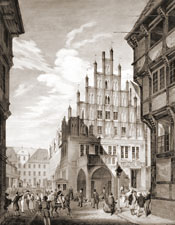


The Polytechnic in its Heyday
When the 1848 Revolution reached Hannover, the polytechnic students stood as one united corps in the Citizens’ Militia. One of them was the sixteen-year-old Wilhelm Busch, who wanted to become a mechanical engineer ...



The Polytechnic in the Time of Radical Change
In 1866 Prussia annexed the Kingdom of Hannover. It became a Prussian province. Prussian legislation led to substantial liberalisation. After the foundation of the Empire in 1871, economic development was stimulated further, and many new industrial plants were created. The downside of advancing industrialisation was an increase in social problems ...



On the Way to Becoming an Institute of Technology
The number of subjects taught doubled between 1875 and 1897. New areas such as shipbuilding were introduced. The academic staff grew accordingly. On 1st April 1879 the Polytechnic was awarded the official title “Hannover Royal Institute of Technology.”
With the Institute of Technology’s constitution, which came into force in 1880, one of the major differences between Hannover and the other German technical institutions was removed. The radically new constitution reorganised the Institute of Technology into five specialised departments: Architecture, Civil Engineering, Mechanical Engineering, Chemistry and Electrical Engineering, as well as General Sciences ...
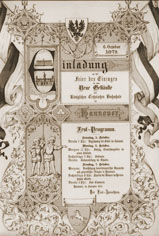


The Fight for Equality with the Universities
The transfer of responsibility for the institutes of technology from the Department of Trade to the Department of Education paved the way for transition from a specialised institute to a broader scientific institution. Institutes of technology did not yet possess such crucial attributes as the right to confer doctorates, which would put them on an equal footing with the universities ...



Reform of Higher Education in the Weimar Republic
When the First World War broke out, 910 out of 998 students at Hannover Institute of Technology signed up for military service in the first year of the war. Almost a quarter of these were to die in the course of the war. Since several generations of young people were not able to study during this time, soldiers returning from the war crowded into the Institute of Technology after the war was over ...



Radicalisation of the Student Body
From the mid 1920s, the Hannover student body was becoming more and more radical, led by nationalistic ideology and culminating in the notorious “Lessing case”. From 1908 the Jewish Privatdozent (private lecturer) for Philosophy, Theodor Lessing, held lectures in the Department of General Sciences ...
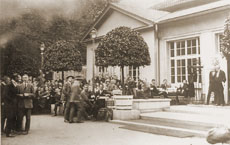


Hannover Institute of Technology in the Nazi Era
In 1933 the Law for the Restoration of the Professional Civil Service came into force, creating the instruments to remove non-Arians and other undesirables from office. At Hannover Institute of Technology only few cleansings are known, as hardly any non-Arians had been appointed ...



Destruction and Reconstruction of Hannover Institute of Technology
During the Second World War, major parts of the Institute of Technology were destroyed in air raids. More than half of the Welfenschloss lay in ruins. Of the remaining more than 20 separate buildings, only five were complete and the rest destroyed to a greater or smaller extent ...
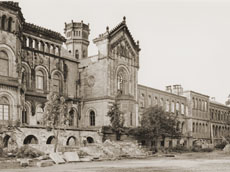


From the Institute of Technology to the Technical University
After a general agreement had been passed in 1964 on the reorganisation of teaching in the sixth forms of Gymnasien, teacher training became the key issue of all further university expansion plans. Student numbers, which had remained almost constant at 4,000 to 5,000 until 1967, rocketed ...
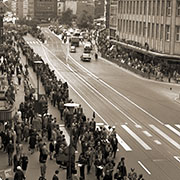


From the Technical University to the University of Hannover
When the Lower Saxony Higher Education Act came into force on 1st October 1978, the College of Education for Lower Saxony / Hannover was incorporated, and the Technical University changed its name to the University of Hannover. With the College of Education, the university gained an educational establishment with a long tradition reaching back into the 18th century and associated with the name of Ernst Christoph Böttcher, the founder of the teacher training college in Hannover ...



From the University of Hannover to Gottfried Wilhelm Leibniz University Hannover
For universities in Lower Saxony, 2000 was dominated by discussions concerning the draft of the Gesetz zur Hochschulreform in Niedersachsen, the Lower Saxony University Reform Law. Both Council and Senate delivered opinions on this. In many subjects, it was soon possible to take the new bachelor’s and master’s degrees. The university started the accreditation of new degree programmes ...











